One of Throckley's more notable residents was William Brown, who was a consulting engineer in the 18th century, and part owner of Throckley Colliery at the time, responsible for the construction of many colliery waggonways throughout the North East of England.
Prominent among the builders of engines, as well as in promoting other improvements in the mechanical engineering of collieries in the Newcastle-on-Tyne district at this period, was William Brown, an eminent colliery viewer. Brown was brought up at Throckley, a village situated about six miles west of Newcastle, and was of an aspiring mind and endowed with much natural ability. The means of acquiring a knowledge of the various branches of colliery work were few at this time, but by dint of careful observation and making the most of such opportunities as he had, Brown was already possessed of superior attainments at an early period of his life, and subsequently succeeded in raising himself to the first position among the colliery viewers of his day.
At the outset of his career he had the good fortune to be taken by the hand by Mr. Bell, a gentleman living in the neighbourhood, who leased Throckley Colliery, and appointed him manager, with a handsome salary and one-fourth share of the colliery. On obtaining this position, in 1756, Brown immediately proceeded to erect a steam-engine at the colliery; and no sooner had he shown his engine-building capabilities at Throckley, than his services were in great request for the building of engines to drain other collieries in the district, In the two following years he built six more engines at different collieries; and in the short space of ten years after commencing practice he had fitted up no fewer than twenty-one steam-engines, including three at collieries in Scotland. Subsequently he built several others.
The family burial place of William Brown Esq.
Hic reponuntur cineres spe beatae Resurrectionis Johannis et Agnis Liberorum Gulielmi Brown de Throckley Fell. Johannes obiit decimo nono Die Januarii 1748 Anno aetatis tertio, Agnes obiit die secundo Feb. 1748 Aetat. dec. mense. Quales fuere dies ille supremus indicabit.
Here are deposited the ashes, in the hope of a blessed resurrection, of John and Agnes, children of William Brown of Throckley Fell. John died on the nineteenth day of January 1748, aged three years. Agnes died on the second day of February 1748, aged ten months. ...
In a discussion about the coal mining rights, on page 285, he records:
Subsequently the coal was leased by Lord Carlisle to Mr. Barkas, who employed William Brown as his overman. Brown was a remarkably able man, and when afterwards Mr. Barkas threw up his lease owing to the bad state of trade, the story goes that in buying some flannel for his pit clothes from Mr. Bell, a wealthy draper in Newcastle, he happened to mention what a pity it was that the Heddon pits should be laid in, and the partnership of Bell and Brown was consequently formed to work them, [144] and the adjacent royalty of Throckley. William Brown removed to a house at Throckley Fell, and should be gratefully remembered by antiquaries from the fact of his having saved the Hercules of VINDOBALA from further injury.[145]
- 144 Heddon was the first place where coals were screened to separate the 'round' from the 'small.' The practice was begun in 1784.
The date stated is shortly after his death, generally given as 1782. Other references suggest coal screening was introduced by William Brown at Willington Colliery around 1776 (Stafford Linsley in Skempton 2002, p.88).
- 145 Lapidarium Septentrionale, p. 48, No. 82. Outside the east end of the south aisle of Heddon Church is a tablet with: 'Hic reponuntur cineres spe beatae Resurrectionis Johannis et Agnis Liberorum Gulielmi Brown de Throckley Fell. Johannes obiit decimo nono Die Januarii 1748 Anno aetatis tertio, Agnes obiit die secundo Feb. 1748 Aetat. dec. mense. Quales fuere dies ille supremus indicabit.' On a flat stone beneath is, 'The Family Burial Place of William Brown, Esq.,' with the conventional arms of BROWN: On a plain bend cotised three lions passant, and the motto ' Suivez Raison,' which is still used by the DIXON-BROWNS, of Unthank. For an account of the older grave-stones in the churchyard see Appendix E.
A sculpture of Hercules, in stone, of the rag-kind, was digged up at it, by some labourers, a few years ago, by whose carelessness it had the misfortune to lose both the head and feet. Mr Brown, of Throckley Fell, saved it from further harm by having it carried to his house. In 1761, it was removed to London by a curious antiquary, Mr Duane, a gentleman, says Dr Stukeley, ....
As Bates tells us, this motto is still used by the Dixons of Unthank Hall, south-east of Haltwhistle. The lineage of the family given by John Burke on page 671 of A Genealogical and Heraldic History of the Commoners of Great Britain and Ireland, Enjoying Territorial Possessions or High Official Rank but Uninvested with Heritable Honours, Volume 4, published in 1838 appears to start with our man:
William Brown, Esq. of Willington, near Newcastle, extensively concerned in collieries on the River Tyne, m. Miss Smith, of Morpeth, and died in 1782, leaving two sons, and three daughters. Of the former, the elder son and heir, William Brown, Esq. married in 1770, Margaret, daughter of William Dixon, Esq. of Hawkwell, in Northumberland...
William Jnr. (b 1740 Willington) and Margaret ( b c1744 Willington) had four sons: Dixon (who succeeded him, b 19 July 1776, Willington), Richard (b c1773 Willington), Robert (b 1775 Willington) and William (b c1777 Willington, d 8 Jan 1813); and four daughters: Margaret (b c1779 Willington, m Lt. General Francis LAYE of Royal Artillery 24 Nov 1803), Mary (b c1781 Willington, m Lt.-Col. William CLARK c1804, d c1814) and Jane (b c1783 Willington, m Ralph FENWICK 28 Apr 1807, d 20 Aug 1825)
William Jnr. died on 28th August 1812 and was succeeded by his eldest son Dixon Brown. On a proviso in the will of William Dixon, Dixon Brown took the surname Dixon in 1825 and became Dixon Dixon Esq. of Unthank Hall with estates in Unthank, Benton, Willington, Benridge and Ingo. He died (without issue) in March 1859, aged 83. He had been a J.P. and deputy-lieutenant of Northumberland.
A search in A genealogical and heraldic history of the extinct and dormant baronetcies of England by John and John Bernard Burke (1838) suggests William Brown may have been granted or claimed the coat of arms borne by extinct ancient lineages of Brownes, for example Browne of Beechworth (p.87). The phoenix above the crest may indicate such resurrection.
[From information detailed in the second blog we now believe William Brown's year of birth to be 1717 and, even better, his place of baptism as Heddon on the Wall.]
Publications of the Surtees Society, Vol.1, p.238 (1841) gives a date for his death of 14th February 1782.
The actual date of construction of the five-mile-long Wylam waggonway is unknown, but it is said to have been built in 1748 (in which case it would have been one of the earliest on Tyneside) and it was certainly in use before 1763. Similarly, it is not certain who designed and built the waggonway, but it is possible that William Brown, of Throckley, who was consulting engineer to various collieries in the north of England and responsible for the design and construction of several waggonways may have been involved. As Brown was part owner of Throckley Colliery, (whose waggonway was completed in 1751, and linked to adjacent staithes at Lemington) there is a strong chance that John Blackett; the owner of Wylam Colliery could have employed him to plan the waggonway.
William Brown, engine builder (his engine is shown on NRO Sant/Beq/9/1/1/24, 25; fig. 220) and colliery viewer, was brought up in Throckley. He had been appointed manager of Throckley Colliery by lessee Mr Bell in 1756. Having erected a steam engine at Throckley, Brown went on to build engines at over twenty-one other collieries (Galloway 1969, 103-104). In 1765 a new winning at Throckley was completed, and because steam-driven pumps had solved the drainage problem, the shaft could be sunken to a greater depth (Armstrong 1973, 14; Rippeth 1993, 44). There were numerous small coal pits at Throckley during the late 1700s, connected by waggonway to Lemington staiths, all worked by Mr Bell and William Brown (Dodds 1930, 35). These are shown on a series of eighteenth century plans (NRO Sant/Beq/9/1/1/24, 26, 32, 33,35, 36, 37; fig. 88). Bell and Brown's colliery was worked out by 1794 (Rippeth 1993,45).
..... Aislabie was enjoying the professional assistance of William Brown,one of the great Tyneside mining engineers, who had worked from a youth at Throckley Colliery, on the north bank of the Tyne opposite Ryton and only a mile or so from it. He had been appointed its manager by the lessee in 1756 and he built a successful steam-pumping engine there in 1756, then a great rarity. We learn from these letters that he became joint lessee of Throckley Colliery and had three steam engines there by 1771. His fame as an engine builder spread – he built engines to 1776 – and he became a consulting engineer and “the most eminent viewer in the north in his day.” In about 1770 he brought what were said to be the first coal screens into use, while in 1774 he was concerned with double waterwheels for winding and built such a water gin in 1778. He also invented a mechanical coal cutter, “known as Willy Brown’s Iron Man”
Proceedings of The Society of Antiquaries of Newcastle upon Tyne, Vol.1, No.12 (1856).
In 1772, William Brown formed a partnership with Matthew Bell and William Gibson to work coal at Willington, near Wallsend.
The company of Bells and Brown continued coal mining, particularly at Willington. Eneas Mackenzie, 1825 records:
Willington, which is distant one mile north-east from Wallsend, is a pleasant pit-village, seated on an eminence. Willington House, occupied by Mr. Watson, is a commodious building. The coals of the colliery here are called Bell and Brown's Wallsend; and the owners are, M. Bell, R. Bell, and Dixon Brown, Esqrs. The adjoining estate, which belongs to the lessees of the coal-mines, consists of 297 acres, and was one of the original estates of the Milbank family in Northumberland. It was sold under trust from Sir Ralph Noel (late Milbank) in 1818.
[The second blog on this site addresses some of these issues.]
About 60 years ago the late Mr William Brown, formerly of Throckley, but latterly of Willington, was bred from his youth in the colliery affairs, and notwithstanding at that period the duty of coal-viewing was so little known that there were few if any to teach him precepts, and from his close application and being endued with a solid judgement, he so far succeeded in the science of coal-mining, as enabled him to give lessons to others, and made himself highly respected as the father of the trade. At that time, about 30 years ago, he had the management in the winning and working a great many collieries on both the Wear and the Tyne, and had been exploring for coals in Scotland and Ireland.
[Bell] took the coliiery and gave him a handsome salary, and one-fourth share of the said colliery. They wrought that colliery upwards of thirty years, which proved a valuable acquisition to both. Then Mr Bell took Shiremoor colliery, which they wrought twenty-one years, which left them handsome profits. Then the present family of the Bells took the famous Willington colliery, and Bell and Brown' Wall's End, in which that family allowed Mr Brown also a fourth share.
Skempton, A W (2002). A Biographical Dictionary of Civil Engineers in Great Britain and Ireland.
Morrison, Jennifer (2007) Newburn Manor: an analysis of a changing medieval, post-medieval and early modern landscape in Newcastle Upon Tyne. Durham theses, Durham University. http://etheses.dur.ac.uk/2924/
Goodchild, J (1998) These grand affairs: The development of the Mickley Colliery. British Mining No.61, NMRS, p110-118.
Flinn, M W (1984). The History of the British Coal Industry. Clarendon Press, Oxford.
Edington R (1813). A Treatise on the Coal Trade: with strictures on its abuses, and hints for amelioration. V. Griffiths, London.

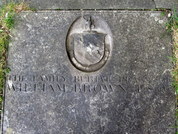


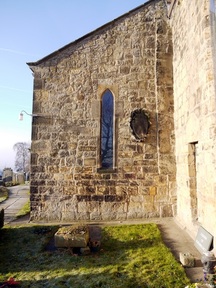
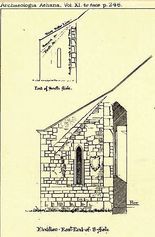
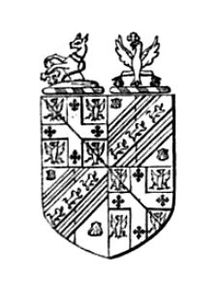
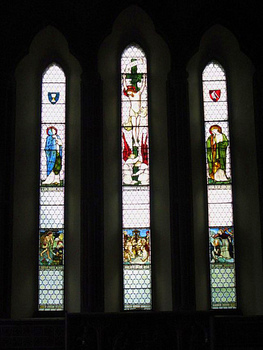


 RSS Feed
RSS Feed
